.
.
Intercepting Solar Radiation
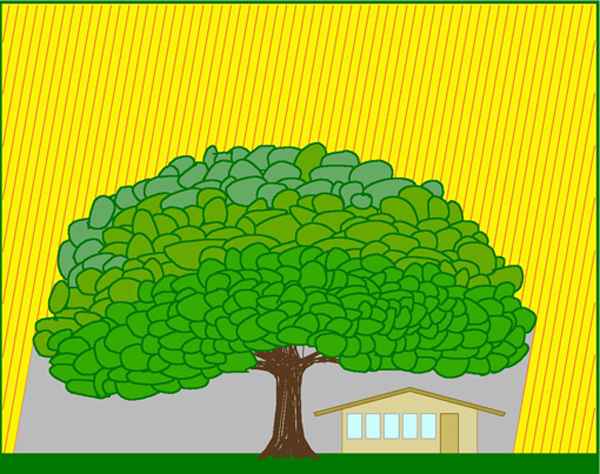
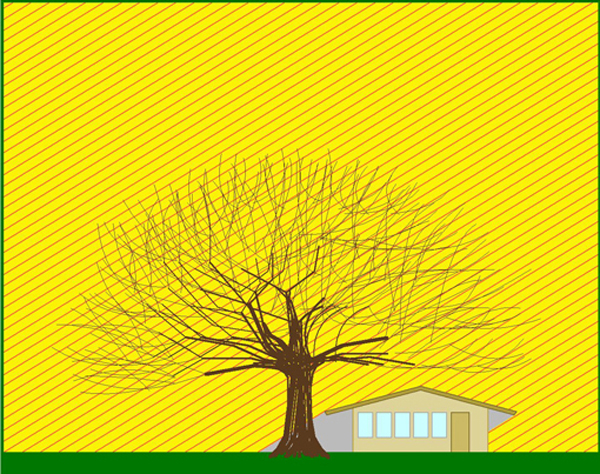
Climate Management Canopy
It is necessary to control the effects of solar radiation through all 12 months of the year. With the HólosHouse solar radiation is managed by an outboard louver scheme integrated into an exoskeleton space-truss structure. This exoskeleton, populated by louvers, is called a Climate Management Canopy. This is analogous to building a house completely under a very large tree. In the summer months solar radiation is blocked from warming the house under the tree. In the winter months solar radiation will the warm the house if the tree is deciduous. The louvers of our Climate Management Canopy can be considered analogous the leaves of the shade tree. Like the leaves the louvers not only block the radiation they enable heat to be dissipated efficiently because of the open space between them.
The Climate Management Canopy intercepts solar radiation in the warm months at the highest sun angles preventing heat gain on the building itself. Solar radiation is intercepted before actually contacting the building surface. In the colder winter months, solar radiation is allowed to enter the building envelope, warming the interior. This is possible because of the louver design.
The images show segments of the Climate Management Canopy, viewed from the west as cross-sections, for each month of the year. Sun angles are shown on the 21st of each month. June 21 and December 21, are respectively summer and winter solstice. Note the sun angle reciprocity for ten of the months. These sun angles are taken at latitude = 34 degrees north, at 12:00 pm noon. The building enclosure hangs from and below the Climate Management Canopy.
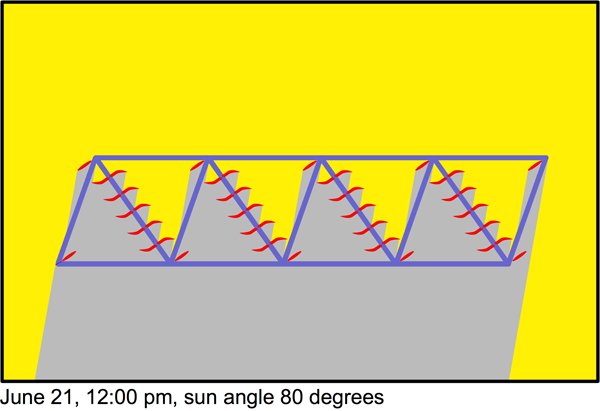

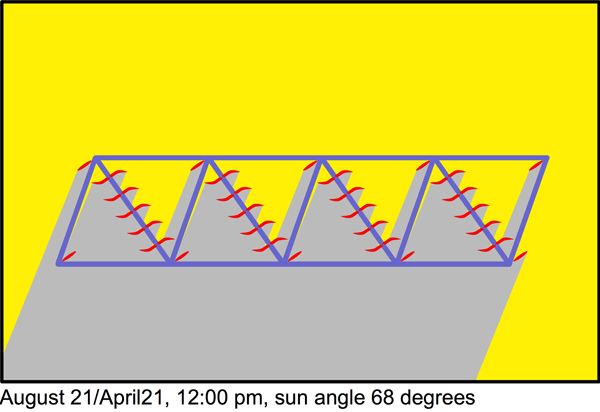




The computer model has been used to develop an effective Climate Management Canopy design by generating images for each month of the year, in one-hour increments. In this way it has been possible to optimize the interaction of solar radiation with the HólosHouse.
In this interior cutaway from East Northeast solar radiation is completely intercepted on June 21 at 9:00 am. This date is the Summer Solstice, the longest day of the year.

In this Plan View of the upper level floor solar radiation is completely intercepted also on June 21 at 9:00 am.

In this interior cutaway from East Northeast solar radiation penetrates the building envelope on December 21, at 11:00 am. This date is the Winter Solstice, the shortest day of the year. In this way the interior is warmed directly from the solar radiation.
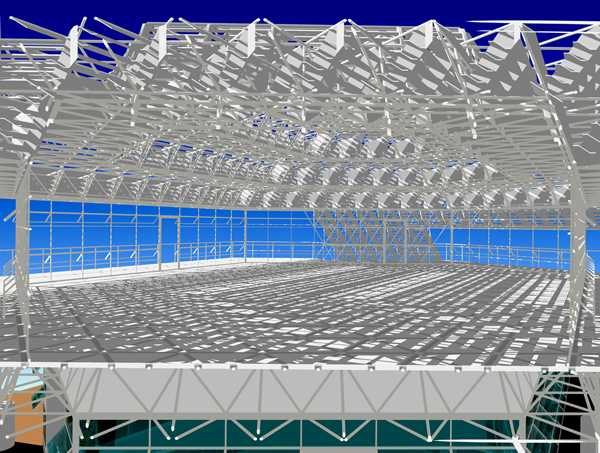
In this plan view of upper level floor solar radiation penetrates the building envelope on December 21, at 11:00 am.
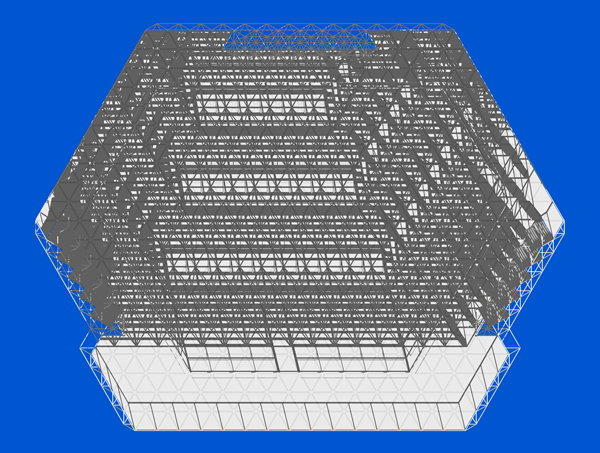
The HólosHouse from above showing the louvers within the exoskeleton of the Climate Management Canopy.
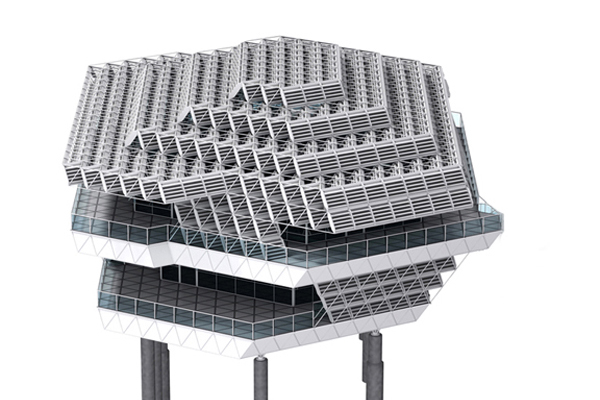
The louvers of the Climate Management Canopy is shown without the supporting space-truss exoskeleton

